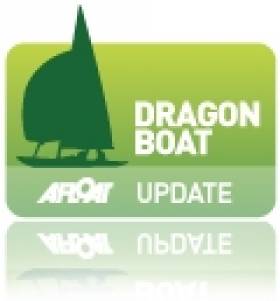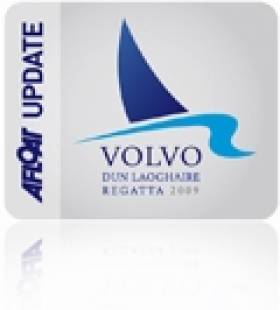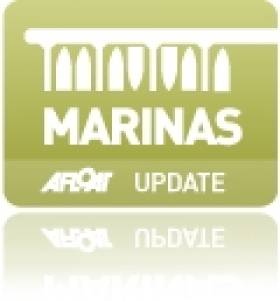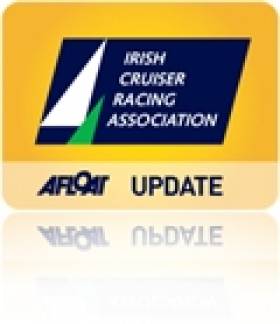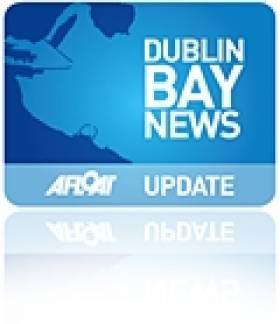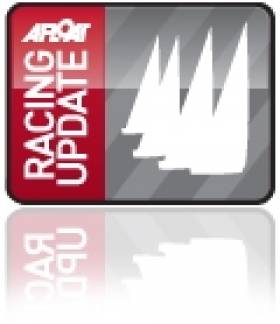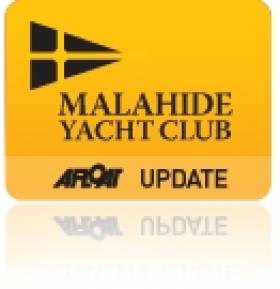Displaying items by tag: Royal Irish Yacht Club
#dragon – The Irish Dragon class has been unable to commit to 'more than a handful of boats' travelling to Bangor in County Down for the 2013 Irish National Championships in August.
As a result, the class has been forced in to a change of venue and the championships will now take place at the Royal Irish Yacht Club on Dublin Bay from August 8-11. The class has an entry of nine for this week's Volvo Dun Laoghaire regatta.
#dlregatta – In the week preceding Ireland's biggest sailing event, Volvo Dun Laoghaire regatta, the Royal Irish Yacht Club is staging a coaching event with video de-briefings on sail trim and upwind and downwind techniques.
The day long event on July 6th will use a Beneteau 31.7 for demonstration purposes. The objective is to spend 50% of the day shore-side and 50% afloat, focusing on practical tips and 'go fast' techniques.
The programme is below, and an entry form is attached and downloadable as an MS word file below:
Sat 8.30am: Briefing RIYC with slides and video on 1,2 & 3 above.
10.00am: Using a B31.7 (or similar) alongside, we will demonstrate practical applications onboard. Full participation and discussion is expected!
1245pm: Finish shore-side session and head on the water
2.00pm: DBSC race start, race will be observed and video recorded
4.30pm: Video de-brief in RIYC
5.30pm: Finish (perhaps later if discussions are in full flow!)
#riyc – The inaugural Royal Irish Yacht Club RIYC Spring Coaching Regatta made a welcome addition to the early Dublin Bay regatta circuit at the weekend.
Over 30 boats took part in a two day on the water training regatta which integrated the standard DBSC Saturday race into its schedule. With Henry Leonard and Fintan Cairns acting as Race Officers, the expert on the water coaching was provided by sailmakers Prof O'Connell, Des McWilliam, Kenny Rumball and Philip Watson.
There were two video debrief sessions across the two days. Saturday focussed on starts, upwind trim and windward mark roundings and Sunday looked at downwind trim and leeward mark roundings.
Visitors came from as far as Galway to partake in the RIYC event. Over the five races Rockabill won Fleet 1, Maximus just edged King One on countback in Fleet 2 and Quest won Fleet 3.
Three spot prizes of subscriptions to the UK Sailmakers new Racing Rules online site went to Rockabill for the consistently best starts, Tribal from Galway for being the furthest visitor and Quest for the best downwind trim on the Sunday.
The Royal Irish Yacht Club (RIYC) has berths for members on its 'RIYC marina', adjoining the clubhouse. The club also operates swinging moorings in the West and North Bights of the harbour and on the deck for dry sailing and dinghy parking. Allocation is based on seniority of membership according to RIYC club rules.
Royal Irish Yacht Club Host Spring Coaching Regatta for Cruisers
#riyc – The Royal Irish Yacht Club (RIYC) is encouraging as many cruiser–racer crews as possible to to attend its Spring Coaching Regatta intiative on the weekend of the 27th and 28th of April in Dun Laoghaire.
The event is bringing together sailmakers Prof O'Connell, Des McWilliam, Philip Watson and Kenny Rumball for on the water coaching and video analysis, Olympic sailor Timothy Goodbody is on hand for tactician briefings and there will be a racing rules pub quiz to highlight the 2013-2016 rule changes.
The off the water sessions will deal with techniques, tactics and racing rule changes for 2013.
Saturday will consist of practice starts, upwind trim and windward mark roundings and will integrate three races. Sunday will focus on downwind trim, gybing and leeward mark roundings and a final race to pull it all together.
Skippers that will be bringing on new crew for 2013 or competitive teams looking to grease the team cogs before the ICRAs will benefit from this world class training weekend say organisers. Non-DBSC boats are more than welcome too and any trailered boats from outside Dublin can be launched from the RIYC.
The cost for this event is €50 per boat which the RIYC say is a continuation of its policy to provide really good and value for money events for skippers.
Irish Yachtsmen Rescued From Stricken Vessel Off Bermuda
#Wolfhound - Four Irish yachtsmen have been rescued from a recently purchased vessel some 70–miles north of Bermuda after it suffered both power and engine failures amid stormy conditions off the northeastern United States.
The 48-foot Swan class sloop Wolfhound, purchased recently by owner/skipper Dalkeyman Alan McGettigan, had departed from Connecticut on 2 February en route to Antigua in the West Indies to compete in the RORC Caribbean 600.
As WM Nixon wrote on Afloat.ie recently, the Wolfhound was expected to eventually call Dun Laoghaire home following its Caribbean adventure.
But according to Bermuda's Bernews website, trouble began when the vessel reportedly suffered a loss of battery power due to the failure of a new inverter charger some 400 miles off the Delaware coast.
This was followed by engine failure a day after departure which left the vessel without communications or navigation systems for eight days.
Between Friday and Saturday the boat reportedly suffered two knockdowns in treacherous weather on the heels of the midwinter storm that recently battered America's northeastern states, and which led McGettigan to activate the on-board emergency beacon.
After a fruitless search by US Coast Guard aircraft, the yachtsmen were eventually located by and transferred to a passing cargo ship, Tetien Trader, which had joined the search effort.
The Wolfhound later sank some 64 miles north of Bermuda.
McGettigan's crew from the Royal Irish Yacht Club in Dun Laoghaire have been confirmed by the club's sailing manager Mark McGibney as Declan Hayes and Morgan Crowe.
Tom Mulligan of the National Yacht Club has been named locally as the fourth crew man on board.
A source close to Afloat.ie says that Hayes telephoned home from the Tetien Trader and confirmed he and the others were being "well looked after" by the Greek crew of the cargo vessel, which is due to land in Gibraltar on 19 February.
A member of the RIYC, Alan McGettigan is an experienced offshore skipper, previously sailing in areas as far afield as the Baltic Sea, the Caribbean, the South China Sea and the Mediterranean, and having competed in past Round Ireland and Dun Laoghaire to Dingle (D2D) races, most recently in the yacht Pride of Dalkey Fuji.
Royal Irish YC 'September Series' Celebrates Inaugural Success
#riyc – Two quarter tonners from the host club were first and second in the inaugural staging of the Royal Irish Yacht Club's September series yesterday on Dublin Bay. (RESULTS BELOW)
The Royal Irish Yacht Club (RIYC) extended the Dublin Sailing season when it ran a new September regatta weekend that incorporated results from the DBSC series as well as the DMYC series that run concurrently on the bay.
Jonathan Skerritt's Quest, won from clubmate Ken Lawless's Supernova on IRC Handicap in the Cruisers 3 class.
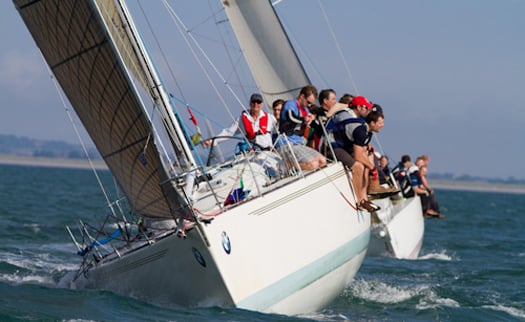
Loose Change, the winner of Class O IRC & Echo at the RIYC September Series. Photo: Aidan Tarbett
In the bigger cruisers I division Howth visitor – and ICRA's Boat of the year – Storm (The Kelly family) topped Cruisers IRC One with Paul O'Higgin's Rockabill V second.
Full results are available to download as an excel file below in each of the 11 racing divisions.
The event was supported by DBSC and the DMYC. Sponsors were Medico, The Flying Spanners and Bacchus Vinos.
Manx Yacht Wins Irish Beneteau 31.7 Title (Photos here!)
#beneteau31.7 – Manx Entry Eauvation sailed by Jason & Debbie Corlett were winners of the Irish Beneteau 31.7 Irish National Championships at the Royal Irish Yacht Club (RIYC) at the weekend. The overall results on Dublin Bay were as follows:
Scratch
1st Eauvation - Jason & Drbbie Corlett
2nd Levana - Jean Mitton
3rd Extreme Reality - Brendan Farrell
Echo
1st Dies Irae - Patrick Rowan
2nd Prima Nocte - Burk/Kennedy
3rd Kernach - Eoin O'Driscoll
Royal Irish (RIYC) Launch New Weekend September Series
#riyc – The Royal Irish Yacht Club (RIYC) is extending the Dublin sailing season with the addition of a new September regatta weekend that incorporates results from the DBSC series as well as the DMYC series that run concurrently on the bay.
The Cruisers 0, 1, 2, 3, Whitesails, Sigma 33 and 31.7's series takes place next weekend (8th-9th September 2012). The Notice of Race (NOR), entry form and schedule are available to download below as word docs.
The schedule for the RIYC series is :
Race 1. 8th September 1030 hrs. Windward/Leeward or Fixed Mark Course.
Race 2. 8th September ASAP after Race 1. Windward/Leeward or Fixed Mark Course.
Race 3. 8th September. As per normal DBSC Schedule.
Race 4. 9th September 1025 hrs. As per DMYC September Series NOR
Race 5. 9th September. ASAP after Race 4. Windward/Leeward or Fixed mark course.
In a busy autumn RIYC will also host DBSC's Turkey Shoot series that runs until Christmas.
Royal Irish dominates in Cruisers 3 East Coast Championship
#malahide – The Royal Irish Yacht Club had a successful foray to Dublin's northside last weekend when three boats sailing under the team name of 'Royal Irish Slugs' won the Team Trophy at the Cruisers III East Coast Championship hosted by Malahide Yacht Club and the quarter-tonner Quest (Barry Cunningham) won the individual title.
Sailed under Modified ECHO handicap, the event involved four races in varied wind conditions over two days and was dominated by the Royal Irish boats. Runner-up was another RIYC quarter-tonner Supernova (Lawless/McCormack/Shannon) while the third member of the team, the J/24 Gossip (Barron/Meredith/Rowley) finished 8th, a result that gave them a narrow win overall from the Howth team of three J/24s.
Another Dun Laoghaire boat, Lady Rowena (David Bolger) won on standard ECHO while Quest was also the winner on IRC.
Sponsored by Union Chandlery and Malahide Marina, the championship had one race over a triangular course and three windward-leeward races, with courses set by PRO Neil Murphy. As a result of winning, the Royal Irish YC has offered to host next year's East Coast Championship.


























